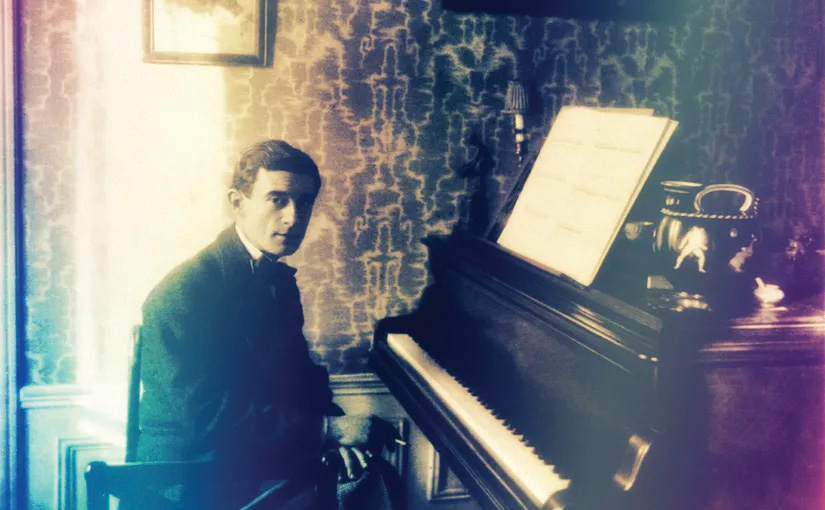Composed 1911; 14 minutes
Critic and pianist Louis Aubert premièred Ravel’s Valses nobles et sentimentales May 11, 1911, at the Paris-based Société Indépendante, which Ravel helped found. Being a new, forward-looking, innovative chamber music society, they had an idea of concealing the names of the composers of the works newly premièred, asking the audience for their best guess. Revealing the names six days later in Le courier musical, over half the audience had correctly identified Ravel as the composer; other guesses ranged from Satie to Kodály. Part of the challenge lay with a title that, by 1911, set up an expectation of conventional Viennese waltzes. Decades earlier in Vienna, Franz Schubert had already written a collection of 34 Valses sentimentales, Op. 50 (D. 779) and a cycle of 12 Valses nobles, Op. 77 (D. 969).
Ravel, however, was clear from the start as to what he wanted to do: "The title Valses nobles et sentimentales sufficiently indicates my intention of writing a cycle of waltzes in emulation of Schubert,” he wrote. In 1911, Ravel’s waltzes sounded astringent and contemporary. The harmonies shift in a very subtle way. The chords and polyphonic lines of the music blend together. The music alternates between wry detachment and tenderness, the more vigorous ‘noble’ waltzes and the slower, more evocative, ‘sentimental’ ones. “The delicious and ever-fresh pleasures of a useless occupation,” Ravel dryly writes at the top of the score. His suite of seven waltzes and epilogue run in a continuous manner, with the epilogue reviewing motifs from six of the previous waltzes. The Valses nobles et sentimentales are both homage to Schubert and a strikingly modern recreation of the spirit of the dance itself.

French composer Maurice Ravel was a fastidious, painstaking worker, a polisher of musical material whom Stravinsky, in a famous description, called "the most perfect of Swiss watchmakers.” Ravel, ever the child at heart, had a large collection of mechanical toys throughout his house at Montfort l'Anaury. But it wasn't this love of mechanical precision that Stravinsky was referring to. Neither was it the Swiss ancestry of his father that Ravel absorbed growing up in the Basque southwest corner of France. Rather, it was the fastidious craft of his music. The transparent textures. The precisely drawn rhythms. The unerring feeling of logic and classical restraint. Debussy said that Ravel, the younger of the two composers, had “the most refined ear that ever existed.”